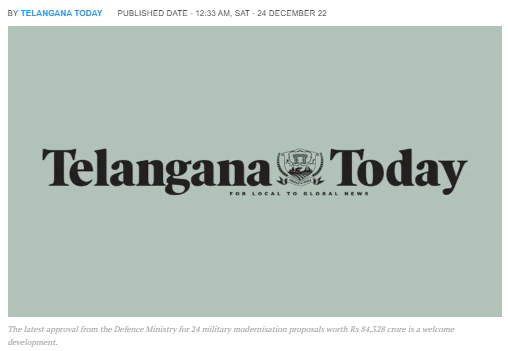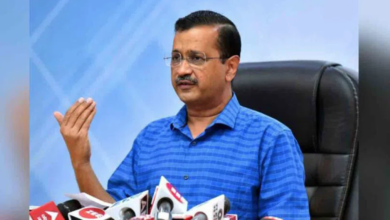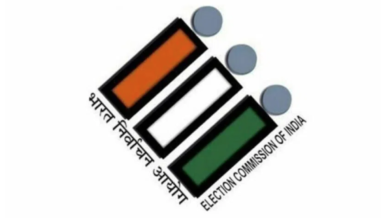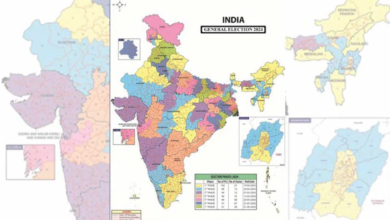Editorial: Shot in the arm

The latest approval from the Defence Ministry for 24 military modernisation proposals worth Rs 84,328 crore is a welcome development.
Hyderabad: Amid the growing concerns over the two-front military threat from Pakistan and China, the urgency for the modernisation of India’s defence forces need not be overemphasised. With China moving at a rapid pace to boost its air power and displaying its hegemonic expansionism, critical deficiencies in the Indian Air Force (IAF) must be addressed on priority. Military modernisation, which did not receive due priority in the past, is an urgent need now. Bureaucratic lethargy, archaic procedures for acquisitions of weaponry and long delays in delivery of promised indigenous weapons have been the key problem areas adversely affecting the combat readiness of armed forces. Against this backdrop, the latest approval from the Defence Ministry for 24 military modernisation proposals worth Rs 84,328 crore is a welcome development.
The Defence Acquisitions Council, headed by Defence Minister Rajnath Singh, gave its nod for the proposals that include major indigenous projects to develop light tanks for the China front as well as futuristic infantry combat vehicles and mounted gun systems for the Army. Of the 24 projects, there are 10 for the Navy, six each for the IAF and Army, and two for Coast Guard. As part of the ‘Make in India’ initiative, the move is expected to boost the domestic manufacturing industry and cut the country’s dependence on foreign imports for military equipment. Among the approved items were 354 light tanks with superior firepower and protection for high-altitude warfare, 480 futuristic infantry combat vehicles, with enhanced lethality, night-fighting and ISR (intelligence, surveillance and reconnaissance) capabilities.
The number of fighter squadrons of the IAF is going down as several of them have been phased out in recent years. At present, the IAF has around 31 fighter squadrons against the sanctioned strength of 42. These deficiencies must be addressed to retain the combat edge. Also, India needs to step up spending on Defence Research and Development which has remained stagnant for several years accounting for less than one per cent of the gross domestic product. In fact, the defence research spending, which stood at 0.088% of the GDP in 2016-17, has come down to 0.083% in 2020-21.
The Parliamentary Standing Committee on Defence has flagged the issue and recommended adequate funding so that strategic projects are taken up with full vigour. This is particularly important in view of the current international scenario where threat perception is increasing due to ongoing conflicts the world over. The budgetary allocations for the Defence Research and Development Organisation (DRDO), the apex defence research body in the country, have been far from satisfactory. In the current 2022-23 budget, there is a shortfall of Rs 1,659.8 crore in budgetary allocation for the DRDO. Over the years, the budget for the DRDO has been around 6%, hardly enough to deliver on strategically important projects.







